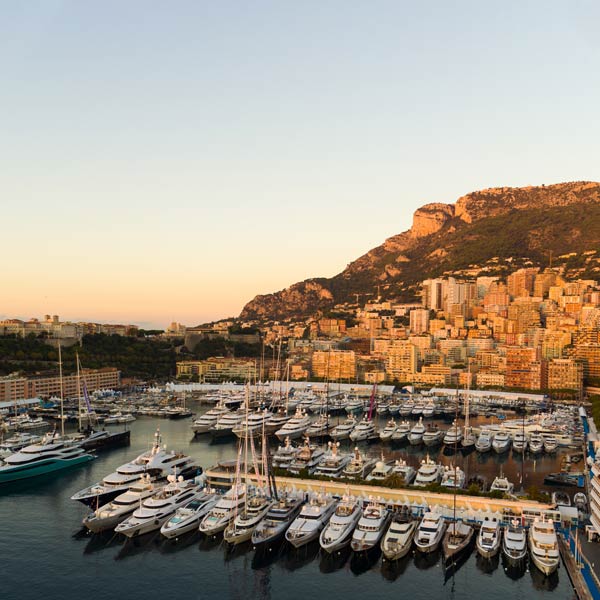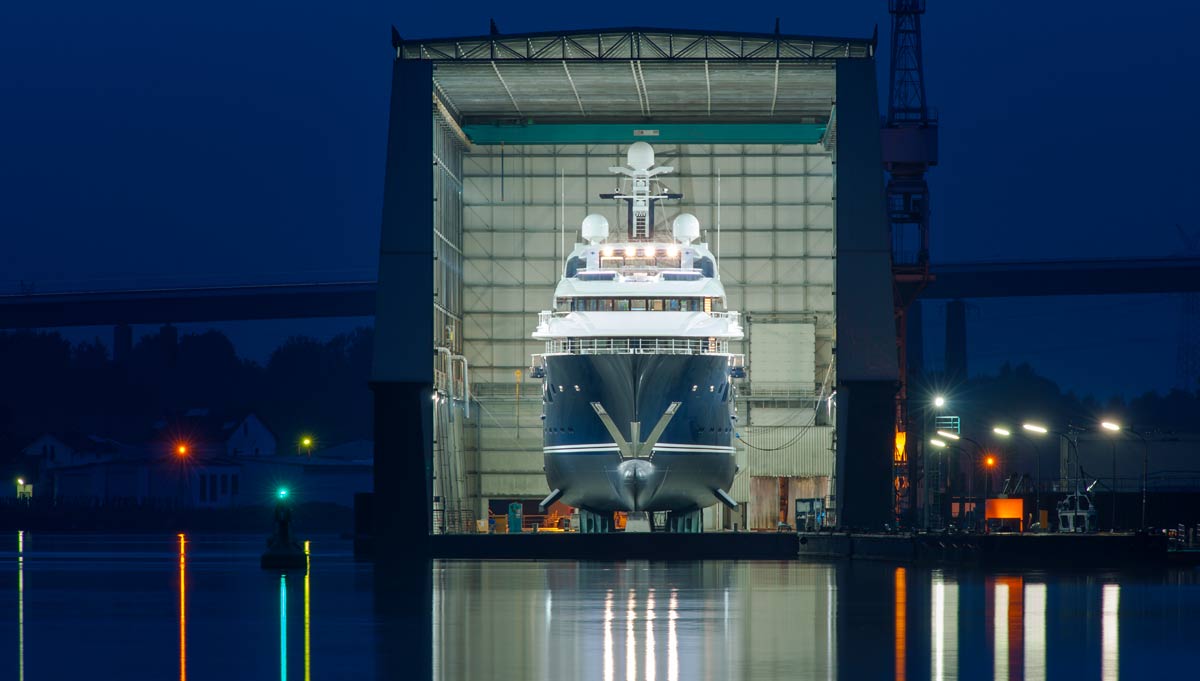
Photo: Lürssen Yachts

Photo: Lürssen Yachts
The hidden value of superyachts
It’s common to see the price of yachts placed front and centre, but the true value of a superyacht should not be measured purely by what it cost.
It is easy, when looking at the big picture, to assume that superyachting is a small industry. There are, after all, only 5,370 or so yachts of 30m or more that have ever been built, and that means that in all likelihood there are fewer than 5,000 superyacht owners. Then there’s the assumption that ours is an industry of untold wealth, where huge sums of money are being passed between a handful of the ultra-privileged. This is further reinforced by sensationalist press coverage of the largest yachts, or of those belonging to whichever industrial villain is in the limelight in a given month. Nothing, after all, attracts outrage (and therefore readership – and therefore advertising revenue) more than a story about an oligarch obscenely blowing $500 million on a yacht.
The truth, however, is arguably a far cry from those sensationalist headlines. One only has to stop and think for a few seconds to realise just what is involved in creating that $500-million yacht. It starts with an idea, a concept – a design. From styling to naval architecture to systems design to structural engineering, computational fluid dynamics, wiring and plumbing schematics, general arrangement and interior design – even before the first sheet of metal has been cut, a huge number of highly talented individuals from multiple design and engineering disciplines will have been involved, and that involvement will continue throughout the build of the project. Of course, there are also the broker teams involved in the original transaction, owner’s representatives and management team, and support staff. Already that one decision by one person has had a considerable impact.
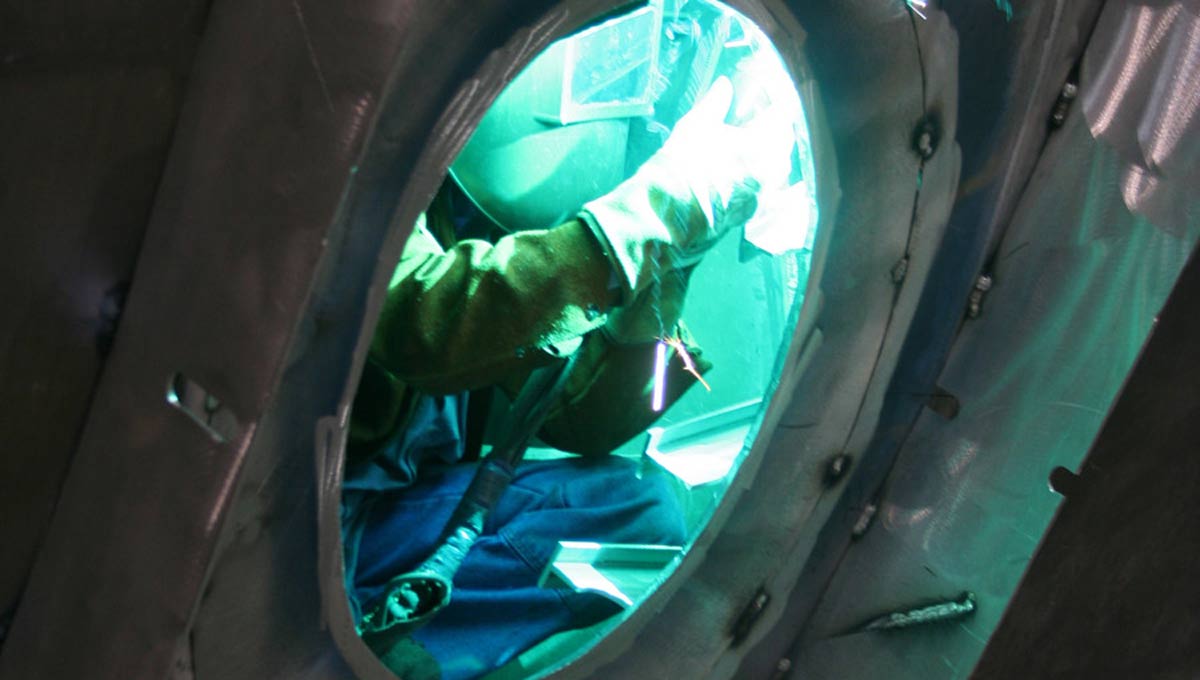
Photo: Burger Boat Company

Photo: Burger Boat Company
Once the design phase has been completed, construction begins, and once again that one decision by one individual carries from the shipyard chosen to build the project all the way through the supplier and contractor chain to the producers and fabricators of the raw materials themselves. A vast phalanx of companies, from specialist passerelle builders to bridge system installers, AV/IT integrators, engine exhaust manufacturers, paint applicators, specialist trades, tender suppliers, deck furniture makers and a thousand more derive their business from building superyachts. Moreover, there are the shipyards themselves, each employing anywhere from 50 to 500 people or more. In 2018, around 60 shipyards delivered superyachts to clients and while that number is lower than at the height of the boom pre-2008 crisis, that’s still a lot of yard workers – and by extension local communities – who derive direct benefit.
The same is true once the build is complete. A superyacht is not just about her owner and the crew who run her, she is also about an extraordinary army of support services. These range from yacht agents and provisioners to maintenance companies, satellite communications providers, fuel bunkering specialists, vintners, ISM/ISPS managers and many, many more – not to mention the direct impact that crew and guest spend has on local businesses either near a yacht’s homeport or when she is out on cruise or charter.
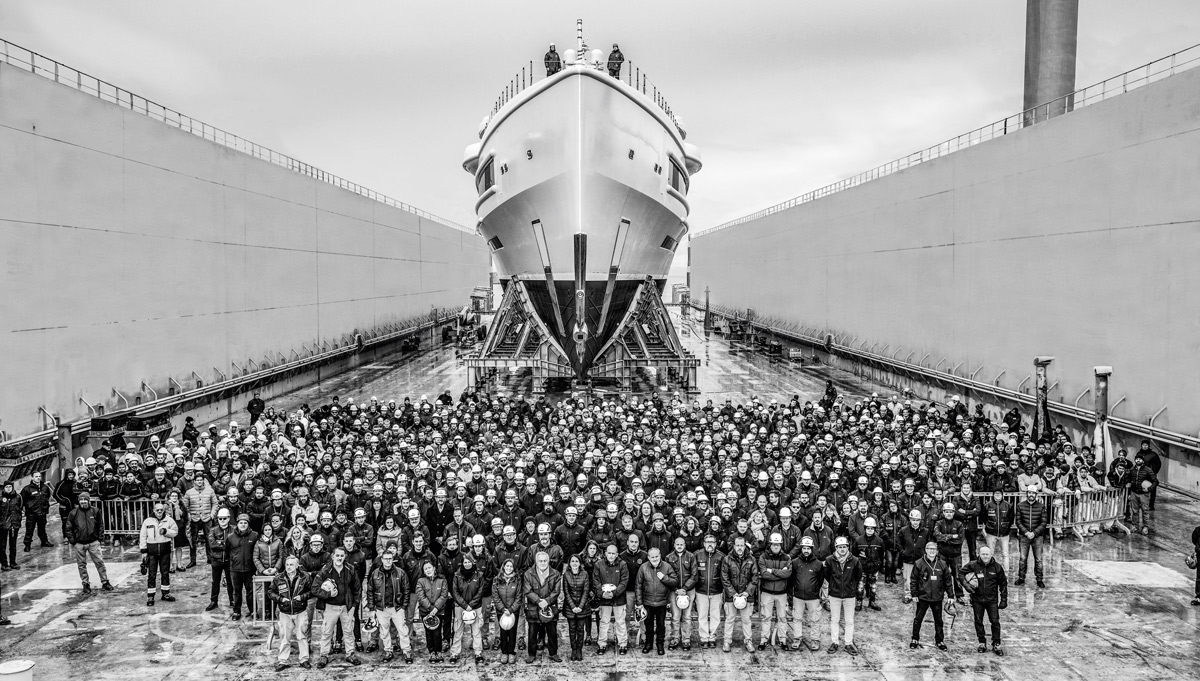
Photo: Benetti

Photo: Benetti
Trying to distil this extraordinary breadth of resource and the true impact that superyachting has on the wider economy is fraught with difficulty simply due to the incredibly diverse nature both of the industry itself and its geographic spread. It has, however, been successfully tackled before.
In February 2012, after several months of painstaking research and analysis, The Superyacht Group published an economic impact study that – for the first time – put hard numbers to the global impact of superyachting. The data were drawn from a variety of sources, ranging from detailed questionnaires completed by more than 1,400 industry insiders, to superyacht-related industry figures supplied by national governments around the world.
The results were startling. The analysis showed that, in the year 2010, superyachts contributed an estimated €24 billion to the global economy, of which €13.76 billion was direct contribution and €10.24 billion was indirect. More than 6,000 companies were operating in the superyacht industry, with jobs created by superyachts worth €5.99 billion annually. The estimated number of people the superyacht industry employed in 2010 was equally impressive – between 130,000 and 150,000 people in land-based jobs, 33,000 crew, and a further 100,000 contractor and day-worker jobs. The superyacht fleet itself, when the monthly average spends of all the yachts were combined, represented more than €7 billion total spend in 2010.
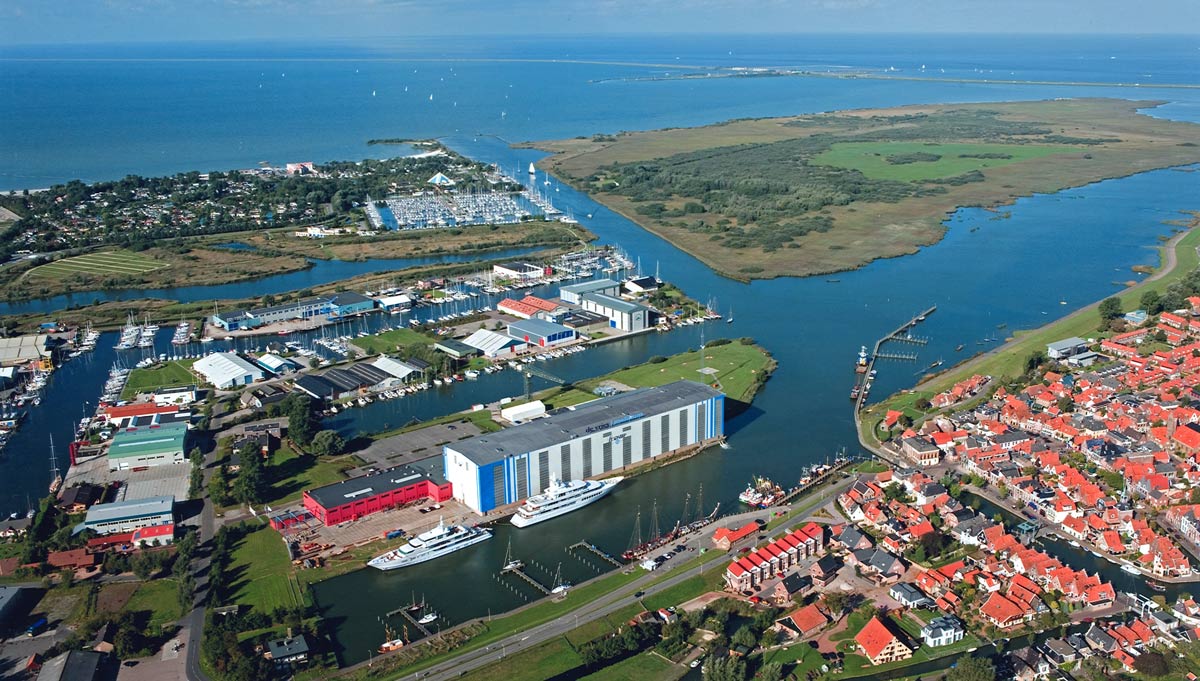
Photo: Feadship

Photo: Feadship
The Superyacht Group’s report may be seven years old, and the information may pertain to figures from 2010, but while the superyacht industry has seen its fluctuations in recent years, it has continued to grow. The fleet of 30m+ yachts has jumped 29 per cent, from 4,136 in 2010 to 5,373 at the start of 2019 – an additional 1,237 superyachts that have been designed and built in the past eight years and which are now operational. It is therefore probably safe to say that the superyacht industry now is worth at least annually what it was in 2010. If you allow for a similar rate of increase as the fleet itself, and consider that new-build activity is continuing at a steady pace, the current contribution of superyachting to the global economy is very likely more than €30 billion annually.
So there you have it. One person’s decision to spend a large amount of money on one luxury item helps keep 250,000 people employed, with significant financial and economic impacts that resonate around the globe. How’s that for big picture?
Reference: Brade, E. et al. (2012). Economic Analysis of the Superyacht Industry. London: TRP Magazines Ltd.

